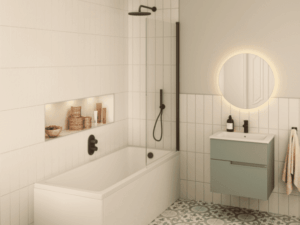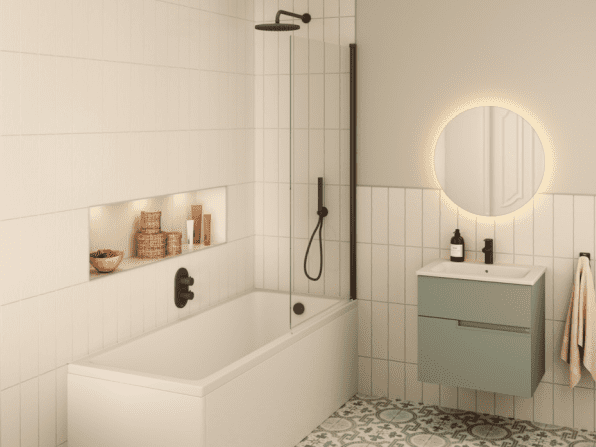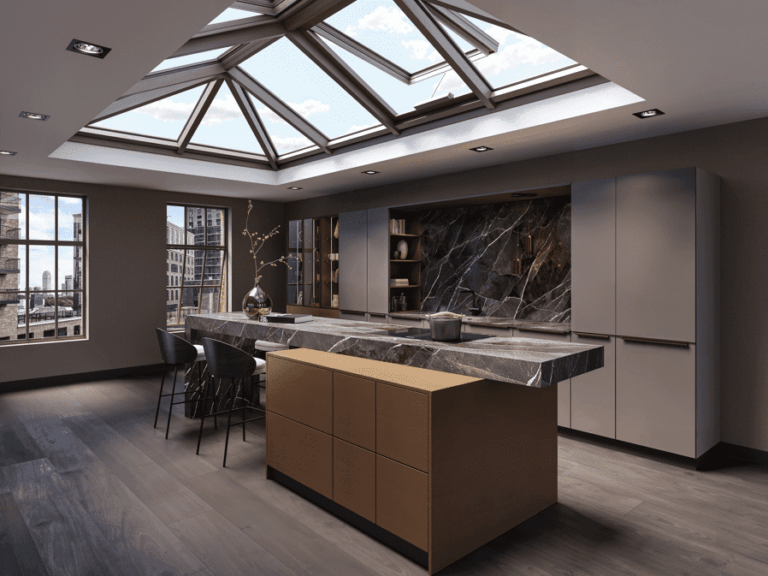Jamie Sandilands, Specification Director at Grant Westfield (Multipanel) explores how wall panels can help overcome the new NHBC regulations.
The world of residential construction is constantly evolving. From changing buyer expectations to advances in materials and an ever-stronger focus on energy and water efficiency, every element of the build process is under close review. One area now seeing sharper scrutiny is bathroom specification, as new compliance requirements combine with commercial pressures to challenge how developers approach what used to be a relatively straightforward decision.
Recent updates from the NHBC (National House Building Council) have introduced a new layer of requirements. In new homes where showers deliver more than 12 litres per minute, the latest guidance calls for an impermeable waterproof layer behind the finished wall surface. At first glance, this may seem like a minor update, but it carries significant consequences for how bathrooms are designed and built.
Tiles have long been the standard choice for bathroom walls. Tiling is familiar, versatile and widely trusted. However, under these updated NHBC rules, fixing tiles directly to plasterboard is no longer enough. Developers must now either use marine-grade backer boards or apply a full tanking system before tiling. While both methods achieve compliance, they also add costs, introduce more materials, bring in extra trades and crucially, demand more time on site.
In an industry already under pressure from skilled labour shortages and tight delivery schedules, this has raised an important question: how can developers continue to meet compliance requirements, protect project budgets and keep programmes on track?
The answer is found in compliant pre-finished wall panels that have been independently tested to rigorous standards. Modern systems like Multipanel from Grant Westfield have been specifically developed to meet these NHBC waterproofing demands, streamline installation and help developers control both costs and sustainability targets. In this feature,
What is behind the change in how developers are specifying bathrooms today?
I see it every week in discussions with developers and specifiers across the UK. The updated NHBC guidance is the main driver. Any shower delivering over 12 litres per minute now requires an impermeable waterproof layer behind the wall surface. This protects structures from water ingress, which can cause serious long-term problems if missed.
For most developers, this means rethinking the standard bathroom build-up. Under the new rules, tiling directly onto plasterboard is not compliant. You either have to install marine-grade boards or use a complete tanking system before tiling, which adds more materials and more trades.
How has this impacted traditional tiling practices on sites?
Tiling has always been the first choice. It is well understood, offers huge design flexibility and has been the default in bathrooms for decades. But with the updated compliance standards, tiling now requires more complex steps like backer boards or membrane systems. This means extra trades, more materials and longer installation times.
On large projects delivering hundreds of homes each year, these additional stages build up quickly. Applying tanking systems also introduces drying times that did not exist when tiling went straight to plasterboard. Across an entire build programme, this can translate into hundreds of additional days, delaying completions and tying up vital site resources.
Why is installation time becoming such a critical concern?
Because in housebuilding every extra day on site matters. Schedules are already under pressure from multiple sides. Adding drying time for membranes or coordinating extra trades for tanking creates new pinch points that slow progress. This impacts cash flow, makes sequencing more complicated and can hold up follow-on trades ready to move in.
That is why developers are now looking more closely at solutions that achieve NHBC compliance but remove these extra steps….






























